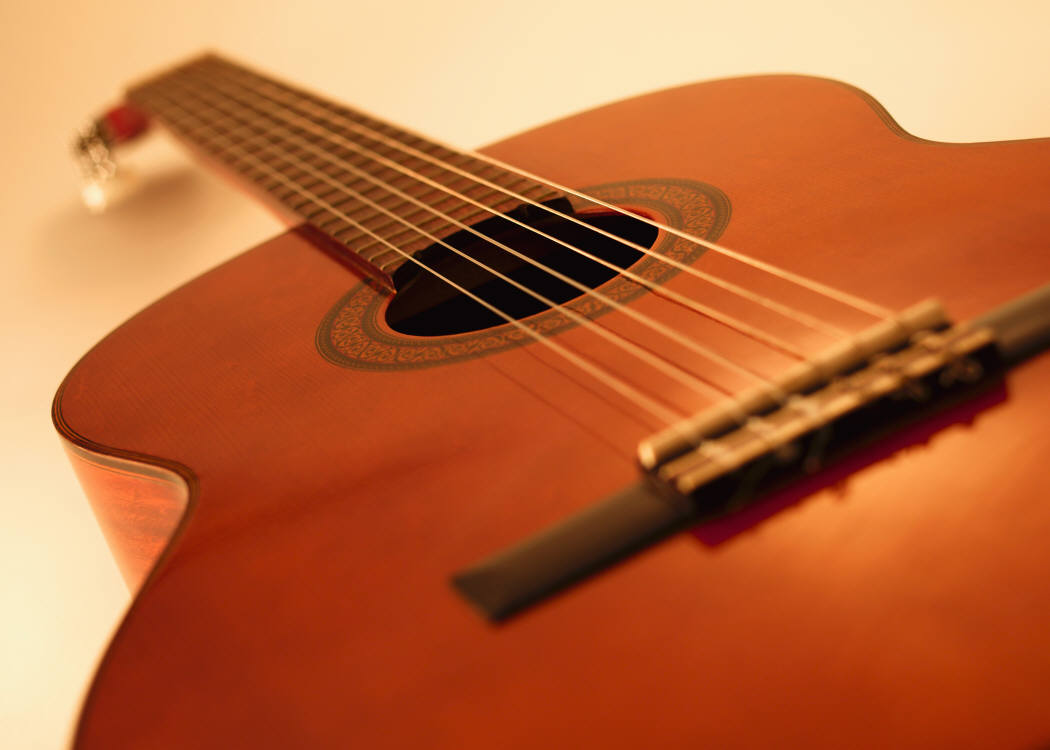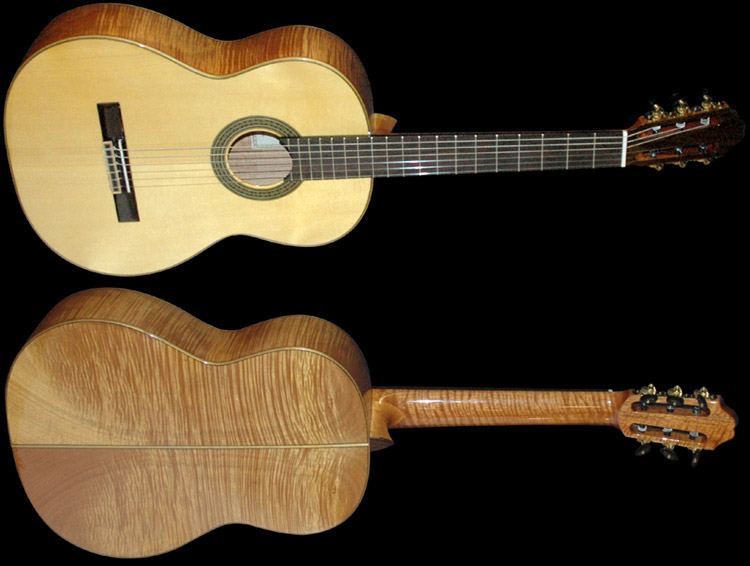Overview of the classical guitar's history
The ancestries of the modern guitar, like numerous other chordophones, track back through many instruments and thousands of years to ancient central Asia. Guitar like instruments appear in ancient carvings and statues recovered from the old Persian capital of Susa. This means that the contemporary Iranian instruments such as the tanbur and setar are distantly related to the European guitar, as they all derive ultimately from the same ancient origins, but by very different historical routes and influences.
During the Middle Ages, instruments called "guitars" with three and four strings were in use but their construction and tuning was different from the modern guitars. The Guitarra Latina in Spain, had curved sides and a single hole. The Guitarra Morisca, which was brought to Spain by the Moors or at least was heavily influenced by Moorish instruments, had an oval soundbox and many sound holes on its soundboard. By the 15th century, a four course double-string instrument called the vihuela de mano, that had tuning like the later modern guitar except on one string and similar construction, appeared in Spain and spread to Italy; by the 16th century, a fifth double-string had been added. During this time, composers wrote mostly in tablature notation. In the middle of the 16th century, influences from the vihuela and the renaissance guitar were combined and the baroque five string guitar appeared in Spain.[32] The baroque guitar quickly superseded the vihuela in popularity in Spain, France and Italy and Italian players and composers became prominent. In the late 18th century the six string guitar quickly became popular at the expense of the five string guitars. During the 19th century the Spanish luthier and player Antonio de Torres gave the modern classical guitar its definitive form, with a broadened body, increased waist curve, thinned belly, improved internal bracing, single string courses replacing double courses, and a machined head replacing wooden tuning pegs. The modern classical guitar replaced older form for the accompaniment of song and dance called flamenco, and a modified version, known as the flamenco guitar, was created.
Renaissance guitar
The gittern, often referred to as Renaissance guitar, is a musical instrument resembling a small lute or guitar. It is related to but is not a citole, another medieval instrument. The gittern was carved from a single piece of wood with a curved ("sickle-shaped") pegbox. An example has survived from around 1450.
Vihuela
The written history of the classical guitar can be traced back to the early 16th century with the development of the vihuela in Spain. While the lute was then becoming popular in other parts of Europe, the Spaniards did not take to it well because of its association with the Moors. Instead, the lute like vihuela appeared with two more strings that gave it more range and complexity. In its most developed form, the vihuela was a guitar-like instrument with six double strings made of gut, tuned like a modern classical guitar with the exception of the third string, which was tuned half a step lower. It has a high sound and is rather large to hold. Few have survived and most of what is known today comes from diagrams and paintings.
"Early romantic guitar" or "Guitar during the Classical music era"
The earliest extant six string guitar was built in 1779 by Gaetano Vinaccia (1759 - after 1831) [33][34] in Naples, Italy. The Vinaccia family of luthiers is known for developing the mandolin. This guitar has been examined and does not show tell-tale signs of modifications from a double-course guitar.[35] The authenticity of guitars allegedly produced before the 1790s is often in question. This also corresponds to when Moretti's 6-string method appeared, in 1792.
Contemporary classical guitar
Contemporary concert guitars occasionally follow the Smallman design, which replaces fan braces with a much lighter balsa brace attached to the back of the sound board with carbon fiber. The balsa brace has a honeycomb pattern and allows the (now much thinner) sound board to support more vibrational modes. This leads to greater volume and longer sustain but compromises the subtle tonalities of the Spanish sound.
The term modern classical guitar is sometimes used to distinguish the classical guitar from older forms of guitar, which are in their broadest sense also called classical, or more descriptively: early guitars. Examples of early guitars include the 6-string early romantic guitar (ca. 1790 - 1880), and the earlier baroque guitars with 5 courses.
Today's modern classical guitar was established by the late designs of the 19th century Spanish luthier Antonio Torres Jurado. Hence the modern classical guitar is sometimes called the "Spanish guitar".



